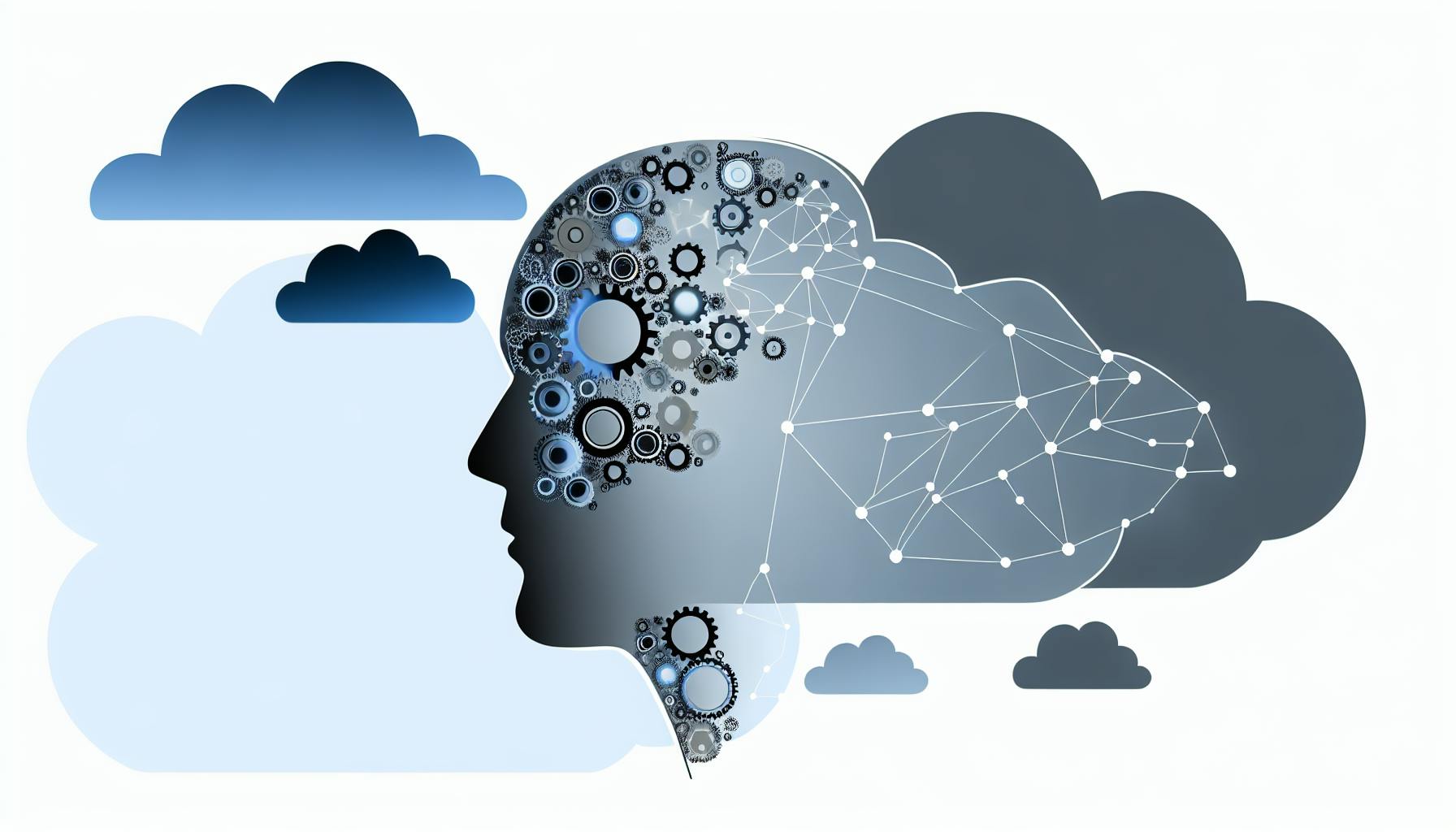Looking to scale your observability beyond Datadog? Here's what you need to know:
Datadog's high costs and complexity are pushing companies to find alternatives. Key components for scaling include logs, metrics, traces, and user experience monitoring.
To scale effectively:
- Get developers involved
- Track platform usage
- Add business context to data
- Improve data management
Advanced scaling methods:
- Centralize logging (e.g. ELK Stack)
- Use AI for anomaly detection and root cause analysis
- Implement OpenTelemetry for standardized data collection
Common challenges and solutions:
- Too much data: Filter, group, and sample
- Complex integrations: Use standard APIs and automate
- Performance issues: Optimize ingestion and distribute load
| Trend | Impact |
|---|---|
| AI | Faster issue detection |
| Continuous profiling | Deeper performance insights |
| FinOps | Better cost management |
The future of observability: AI-driven analysis, open source tools, and flexible solutions for modern cloud architectures.
Related video from YouTube
What is Large-Scale Observability?
Large-scale observability lets you understand complex, distributed systems by collecting and analyzing data from many sources. It goes beyond basic monitoring to provide insights into system behavior and performance.
Big environments face challenges like:
1. Massive data volumes
Systems generate tons of logs, metrics, and traces. Making sense of it all is tough.
2. Need for real-time insights
Large systems require quick detection and resolution of issues.
3. Distributed complexity
With microservices and cloud architectures, understanding component interactions is crucial.
Many orgs are turning to AIOps to help. It enhances observability by:
- Automating analysis
- Providing fast insights
- Reducing alert noise
| AIOps Benefits |
|---|
| Faster detection |
| Automated tasks |
| Better alerts |
| Predictive capabilities |
55% of orgs now use AIOps for observability. It helps teams handle growing IT complexity.
For example, AIOps can spot unusual patterns in massive datasets, focusing teams on high-priority issues. It can also automate tasks like scaling resources based on observability data.
To implement large-scale observability:
- Set clear goals
- Add instrumentation
- Define key metrics
- Centralize data collection
- Create dashboards
- Train teams on best practices
Key Parts of Scalable Observability
Scalable observability relies on four main components:
Logs
Text records of system events. They're like a detailed diary, showing:
- Error messages
- User actions
- System changes
Logs help debug issues and understand what happened.
Metrics
Numerical measurements of system performance, like:
- CPU usage
- Response time
- Error rate
Metrics are great for alerting when values pass thresholds.
Traces
Follow requests through distributed systems to find bottlenecks and troubleshoot complex issues.
User Experience Monitoring
Focuses on end-user interactions:
1. Real User Monitoring (RUM): Collects data on actual usage.
2. Synthetic Monitoring: Simulates user actions.
| Metric | Description | Why It Matters |
|---|---|---|
| Uptime | % time system is available | Shows reliability |
| Page load time | Time for page to load | Affects user satisfaction |
| Task success | % of completed user actions | Shows usability |
| Error rate | % of actions with errors | Highlights issues |
Combining these gives a full picture of system health. For example, New Relic lets teams monitor every layer from frontend to backend.
To implement:
- Collect data from all components
- Use a central platform to analyze
- Set up key alerts
- Review and adjust regularly
How to Scale Observability Effectively
Here are four key strategies:
1. Include Developers
Get developers involved to set standards and gather feedback. This integrates observability into development.
- Hold regular dev-ops meetings
- Create clear instrumentation guidelines
- Let devs contribute to dashboards and alerts
2. Monitor Platform Usage
Track data usage by team and type to manage resources and costs.
| Metric | Purpose | Action |
|---|---|---|
| Ingestion rate | Track data volume | Alert on spikes |
| Query speed | Find slow queries | Optimize as needed |
| Storage use | Monitor costs | Manage data lifecycle |
3. Add Context
Connect data to business results for more relevant insights.
- Tag data with business info
- Show impact on KPIs
- Prioritize alerts using context
4. Improve Data Management
Organize telemetry for better handling.
- Use central logging
- Sample data to reduce volume
- Automate retention and archiving
Advanced Methods for Scaling Observability
As systems grow, try these advanced approaches:
1. Use Central Logging
Consolidate data sources for easier analysis. The ELK Stack is popular for this.
Benefits:
- Simpler management
- Faster troubleshooting
- Better security
Best practices:
- Use structured formats
- Set up log rotation
- Create real-time alerts
2. Apply AI and Machine Learning
AI helps handle massive data volumes efficiently.
| AI Use | Benefit |
|---|---|
| Anomaly detection | Spots unusual patterns |
| Root cause analysis | Finds issue sources quickly |
| Predictive maintenance | Forecasts potential failures |
Logz.io is adding large language models to simplify observability for all skill levels.
3. Use OpenTelemetry

This open-source project standardizes telemetry for cloud-native apps.
Features:
- Distributed tracing
- Metrics collection
- Log aggregation
It works with various backends. Datadog supports OpenTelemetry data via OTLP.
To use with Datadog:
- Install OpenTelemetry SDKs
- Add telemetry points
- Create a Datadog exporter
- Adjust tracing settings
sbb-itb-9890dba
Solving Common Scaling Problems
Let's tackle three common issues:
1. Too Much Data
69% of teams worry about growing observability data. To manage:
- Filter and group: Collect only key metrics and logs
- Set retention policies: Keep high-res data short-term
- Use sampling: Analyze subsets of high-volume data
| Strategy | Benefits |
|---|---|
| Filtering | Cuts costs, speeds queries |
| Retention policies | Balances history and efficiency |
| Sampling | Maintains insights with less data |
2. Complex Tool Integration
Teams use 16 monitoring tools on average. To simplify:
- Use standard APIs like OpenTelemetry
- Create a unified dashboard view
- Automate tool connections
3. Keeping Systems Fast
To maintain speed as you scale:
- Optimize ingestion: Batch non-critical data
- Distribute load: Balance observability components
- Monitor your monitors: Watch tool resource usage
Scaling Observability in Cloud Systems
Cloud and Kubernetes environments need special approaches:
1. Observability in Kubernetes
To scale in Kubernetes:
- Use native tools like the metrics API
- Implement eBPF for efficient data collection
- Deploy distributed collectors
| Tool | Use | Key Feature |
|---|---|---|
| Prometheus | Metrics | Auto-discovers K8s components |
| Grafana | Visualization | Pre-built K8s dashboards |
| Kube-State-Metrics | Cluster metrics | Shows K8s object states |
2. Observability in Microservices
For microservices:
- Use distributed tracing
- Implement a service mesh
- Centralize logging
| Pillar | Tool Example | Function |
|---|---|---|
| Metrics | Prometheus | Collects time-series data |
| Logs | Elasticsearch | Central log storage/analysis |
| Traces | Jaeger | End-to-end tracing |
Google Cloud Operations Suite offers comprehensive microservices observability.
Focus on:
- Automation: Auto-discover new services
- Context: Add metadata to telemetry
- Integration: Choose compatible tools
Planning for Future Observability Needs
To future-proof your strategy:
1. New Observability Trends
Key trends:
- AI Integration: Helps understand systems quickly
- Continuous Profiling: Deeper performance insights
- FinOps Focus: Managing observability costs
| Trend | Impact |
|---|---|
| AI | Faster issue resolution |
| Profiling | Better performance data |
| FinOps | Improved cost control |
2. Building a Culture of Scalable Observability
To create a supportive culture:
- Encourage cross-team collaboration
- Invest in ongoing training
- Define clear, goal-aligned metrics
- Automate common issue responses
Understanding observability costs is crucial for making informed decisions.
Conclusion
Scaling observability beyond Datadog requires strategy. As complexity grows, flexible and cost-effective solutions are key.
Open-source options like SigNoz offer integrated observability without lock-in. OpenTelemetry adoption provides data export flexibility.
When evaluating alternatives, consider:
| Factor | Importance |
|---|---|
| Pricing clarity | High |
| Integrations | Critical |
| OpenTelemetry | Growing |
| AI features | Emerging |
The market remains competitive. Better Stack offers a user-friendly option starting at $24/month, while New Relic provides 100GB free.
AI integration is set to play a crucial role in observability's future. AIOps platforms are emerging as powerful analysis tools.
To stay ahead:
- Assess current tools and data sources
- Look for full-fidelity, enterprise-wide visibility
- Consider AIOps for critical applications
FAQs
What's the difference between observability and monitoring?
Monitoring tracks predefined metrics. Observability analyzes inputs and outputs for flexible system health insights.
What is open source observability?
It uses open source tools to monitor system performance. Benefits include:
| Aspect | Advantage |
|---|---|
| Flexibility | Customizable |
| Cost | No vendor lock-in |
| Community | Wide support |
| Integration | Easier with open source |
Open source lets companies test features to determine value before scaling.



